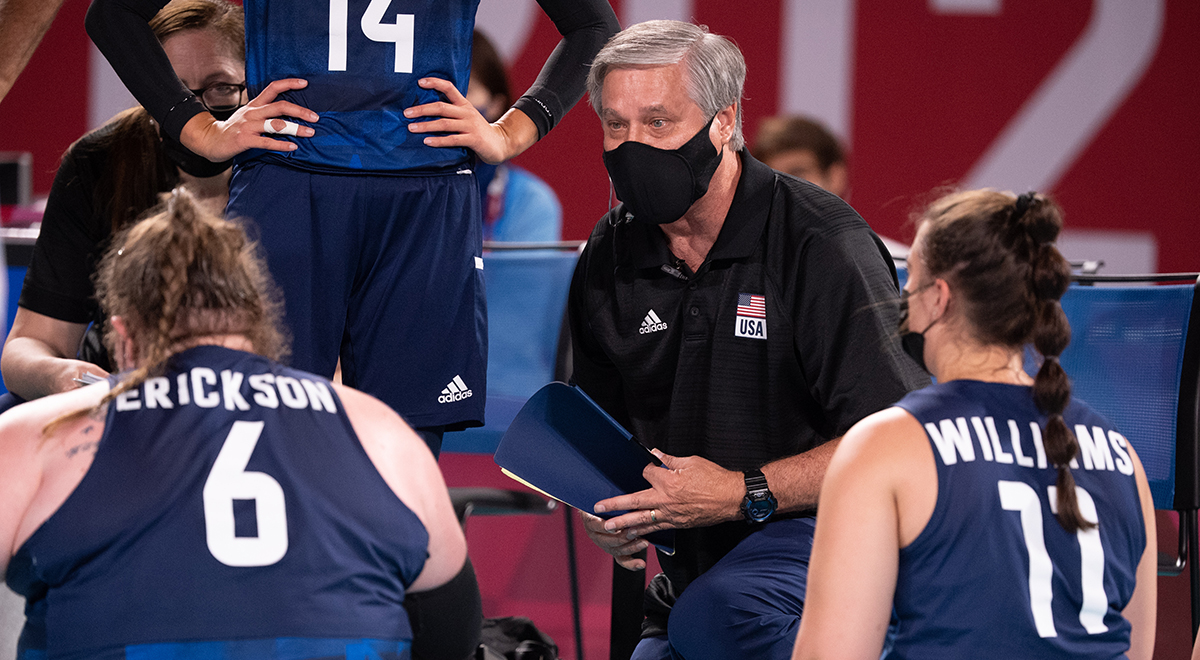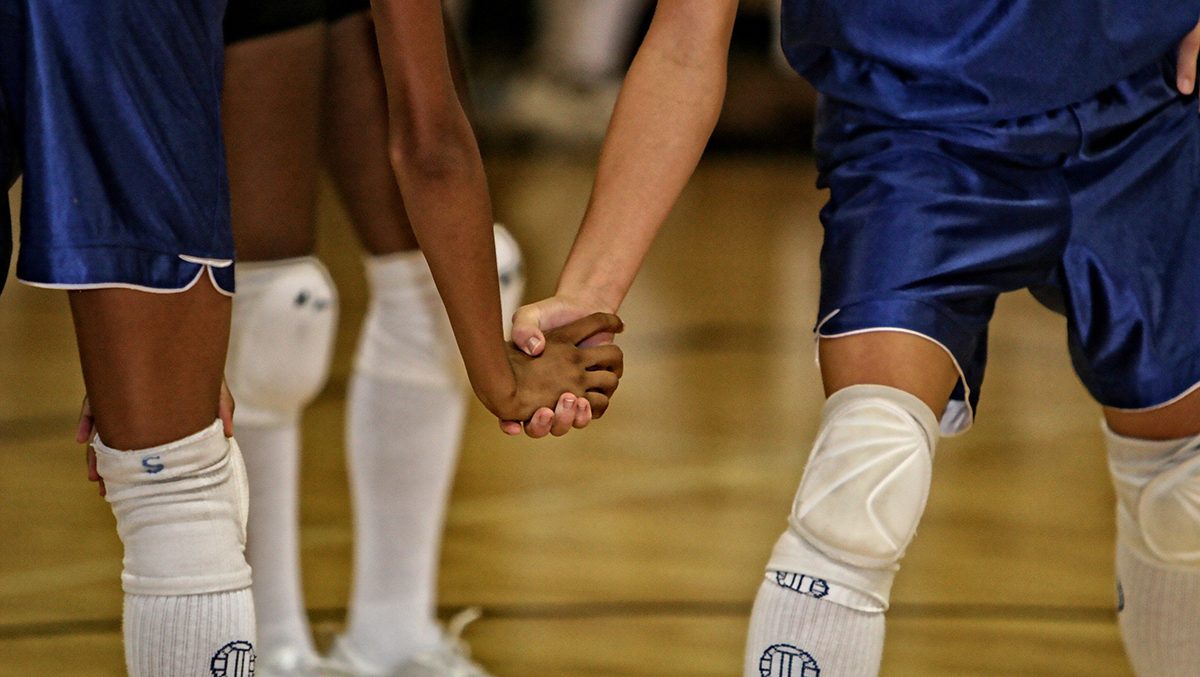
Developing the Person, Not the Player
It is critical that coaches develop the person, not the athlete. Developing the person allows the athletic skills to grow, but the opposite is not necessarily a guarantee.
Resources for
Follow USAVolleyball

Unfortunately, the world of sport isn’t without risk: Even the most highly monitored athletes can fall victim to illness and injury. When Buffalo Bills player Damar Hamlin went into cardiac arrest on the field, eventually recovering consciousness days later in the ICU, we saw the power of a sporting community coming together. But we also saw a need to be better prepared for situations like this, especially for younger athletes.
Here, TrueSport Experts Kevin Chapman, PhD, clinical psychologist and founder of The Kentucky Center for Anxiety and Related Disorders, and Nadia Kyba, MSW, the president of Now What Facilitation, share a few important ways that you can help athletes navigate traumatic times and become better prepared for moments like these.
Hamlin’s traumatic cardiac event had the nation focused on what caused his heart to stop and what his road to recovery looks like. But there are traumatic injuries in sport happening constantly, and at every level of sport.
According to the CDC, high school athletes account for an estimated 2 million injuries, 500,000 doctor visits and 30,000 hospitalizations annually. Student-athletes are also under a tremendous amount of stress, which can be hard to acknowledge as a coach or administrator. As adults, we tend to forget that students have high levels of stress because we often look back at our teen years as feeling worry-free relative to the challenges we face as adults. But acknowledging that students are feeling stress even without a specific tragedy or trauma can help you better understand and guide your team through good and bad times.
“It’s so important for coaches to not push away tragedy and instead, talk about it openly,” says Chapman. “I think that it’s really important for coaches to explicitly set time aside to have in-depth conversations with their team about the tragedy, the transient nature of life, the importance of relationships, that kind of thing.”
This doesn’t mean waiting for a tragedy to befall your own team: Coaches can look at a situation like Hamlin’s and use that to start the conversation. It’s likely that many students, especially the serious athletes, are looking at Hamlin’s cardiac arrest and feeling stress or anxiety about how something similar could happen to them—or are fans of Hamlin’s and are concerned about his welfare.
“Having these conversations as a team acknowledges that when life happens, we as a team are going to come together as opposed to pushing things away and ignoring them,” Chapman adds. “When we can talk about these things, we all heal in healthy ways.”
You may not know about a tragedy or trauma that happens to an athlete on your team, but as a coach, you can have an open-door policy that makes it more comfortable for athletes to come to you when they do have a tragic event.
“Adopt a team culture where talking about hard things, and talking about emotional experiences on and off the field, is normalized,” says Chapman. “That’s incredibly important to a team’s culture. I believe in a preventative mentality as opposed to what most coaches do, which is an intervention mentality. When it comes to tragedy, trauma and emotional hardship, it’s necessary to have a healthy team culture where those conversations are welcomed. We want to be prepared for adversity, on and off the field.”
“Especially at a youth level, encourage athletes to stay away from social media as much as possible,” says Chapman. “Tragedy and trauma are retweeted and reposted at a stunning rate now, and our society is obsessed with seeing things happen in real time, often at the expense of other people. Spending time online searching and scrolling can retraumatize many people and keep athletes emotionally dysregulated.”
Some students will turn to social media to seek support and healing, but as a coach, you can help provide resources like a mental health professional to better help athletes deal with trauma.
It’s easy to overlook the more ‘invisible’ injuries that can lead to trauma and tragedy, says Chapman. While Hamlin’s traumatic incident was impossible to miss, we’re also seeing thousands of athletes suffering from post-concussion symptoms because they aren’t outwardly showing signs of injury, or they appear to be recovered and return to play too early. Unfortunately, the aftermath of an injury like a concussion can be impossible to see but can impact an athlete for years afterwards. And despite the evolution of coaching best practices, the typical response of ‘no pain, no gain’ or ‘suck it up’ is still far too prevalent.
Instead, encourage athletes to be on the lookout for signs and symptoms of concussion-based symptoms, overtraining or chronic fatigue issues, or even more basic injuries like muscle tears and strains that may not be obvious to the naked eye. Helping athletes who are struggling with any type of ‘invisible injury’ feel seen, validated, and taken seriously is important as a coach or administrator.
Telling athletes to take more time for self-care may not be entirely helpful.
“We hear a lot about teaching athletes to focus on self-care, but community care is equally important, if not more so,” says Kyba. “There’s so much emphasis on self-care in the media, but that’s not always helpful for an individual who’s having a tough time coping with a situation but feels powerless to change anything in their lives. Self-care can be useful, but it also puts the responsibility of care on the athlete. Instead, it should be about the community coming together to support those who are in need. Telling an athlete to take a hot bath isn’t as helpful as bringing a therapist in to speak to the team about a tragedy that has impacted them.”
Ultimately, if you’re reading this article and thinking, ‘I don’t have any tragedies to worry about with my team,’ now is the optimal time to plan for how you will handle those tough moments. “Be prepared for when those situations arise—don’t wait for when trauma or tragedy happens,” says Kyba. “When things are going smoothly is the best time to think about how to support a team in times of trouble.”
“Each school will have to identify and determine what makes the most sense practically in a given situation,” says Chapman. “A tragedy at your school might lead to holding an assembly for a larger discussion and/or having smaller conversations within teams. But any of these conversations should, in my estimation, be done with a grief counselor or a mental health professional present along with coaches and administrators. Coaches should be working with administrators, psychologists, therapists, and trainers to create an action plan that you can easily put into place if the need arises.”
Tragedy and trauma are, unfortunately, often part of the athletic experience. As a coach, administrator or other sport official, you can help athletes navigate these difficult moments by creating a culture of openness and communication, and having an action plan and resources ready for when there is a need
About TrueSport
TrueSport®, a movement powered by the experience and values of the U.S. Anti-Doping Agency, champions the positive values and life lessons learned through youth sport. TrueSport inspires athletes, coaches, parents, and administrators to change the culture of youth sport through active engagement and thoughtful curriculum based on cornerstone lessons of sportsmanship, character-building, and clean and healthy performance, while also creating leaders across communities through sport. For more expert-driven articles and materials, visit TrueSport’s comprehensive collection of resources.
This content was reproduced in partnership with TrueSport. Any content copied or reproduced without TrueSport and the U.S. Anti-Doping Agency’s express written permission would be in violation of our copyright, and subject to legal recourse. To learn more or request permission to reproduce content, click here.